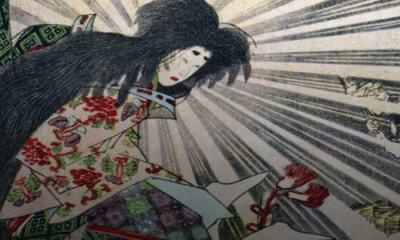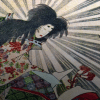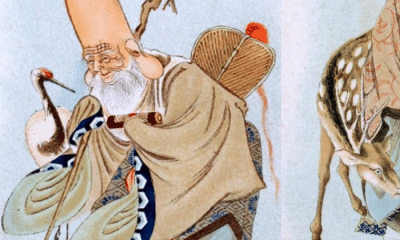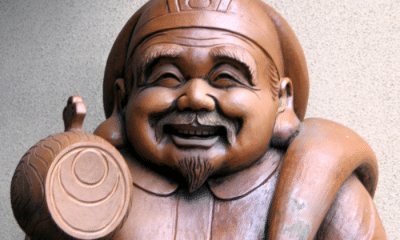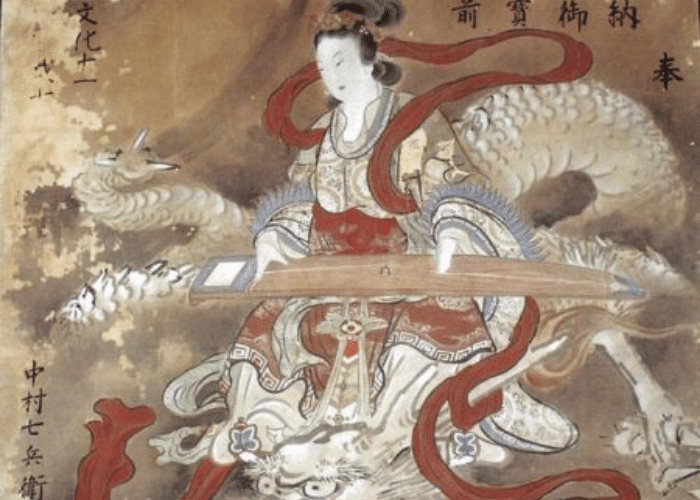
Japanese
Benzaiten: A Japanese Goddess from Many Religions
Benzaiten: A Japanese Goddess from Many Religions
Benzaiten is considered to be a lucky goddess in both of Japan’s major religions. The origins of the goddess of knowledge and music, however, lay far beyond the islands of Japan.
In Japan, Benzaiten is one of the major goddesses in Buddhism. Also called Benten, she is revered as a goddess of music, the arts, knowledge, speech, and wealth.
Benzaiten is also a protectress of the Japanese people. These qualities led to her inclusion among the Seven Lucky Gods that exemplified both virtue and blessings.
She is also revered in Shinto. As one of that religion’s many spirits, she has shrines that recognize her as the goddess of music and knowledge.
Benzaiten is an example of religious syncretism in Japan. Both of the nation’s traditional religions adopted her as a deity with the same symbolism and domain in each.
The appeal of Benzaiten in different religions goes far beyond the traditions of Japan, however. As is shown in her iconography, she is recognized in one of the world’s oldest religions as a goddess from another culture altogether.
Benzaiten in Japan
In Japanese Buddhism, Benzaiten is a goddess with many functions.
She is described as the goddess of everything that flows. Water, time, speech, music, and knowledge can all flow forth thanks to the blessings of Benzaiten.
Of these, the flow of knowledge through music became central to Benzaiten’s worship.
She is usually pictured holding a biwa, a traditional Japanese lute. The biwa was not just a musical instrument, but was specifically used in storytelling and poetry.
Her association with music and speech made her a favorite goddess of those who used those skills in their art. She was a patroness of musicians, geisha, dancers, and writers.
Benzaiten was also revered as a protective goddess of both the state and the people.
The Sutra of Golden Light’s Japanese translation named Benzaiten as one of the goddesses who vowed to protect monks that upheld the teachings of the Buddha and taught the sutra to others.
The Sutra of Golden Light also promised prosperity and peace to leaders and governments that ruled with Buddhist principles. The goddesses named, specifically Benzaiten, were therefore thought to bless the Japanese government under Buddhist leadership.
Her blessings eventually expanded beyond the religions of the sutras, though.
Like much of Asia, Japanese religion is often syncretic, meaning that multiple religions both coexist and merge with one another. Like many Buddhist figures, Benzaiten is also revered as a kami, or spirit, in the Shinto religion.
In Shinto, she is often called Ichikishima-hime-no-mikoto and is, like in Buddhism, revered as a personification of eloquence, knowledge, and music. She is also sometimes considered to be an aspect of the kami Ugajin, a fertility spirit who is depicted as both male and female.
Uga Benzaiten is typically shown as a coiled snake with the head of a beautiful woman. The association with the snake-like fertility kami was likely made because her Buddhist counterpart is often depicted on the back of a serpent.
Over time, Benzaiten’s association with governance and the virtues of wisdom and the arts led to her being incorporated into one of the most famous groups of deities in Japanese folklore.
Benzaiten was the only female deity to be originally included in the fukujin, or Seven Lucky Gods.
Each of the Lucky gods brought their own blessings and virtues, Benzaiten being associated with knowledge, musical ability, and talent. She was also then associated with a blessing that flowed from all of the Lucky Gods, wealth.
My Modern Interpretation
Like most of the Seven Lucky Gods, however, Benzaiten was not a native Japanese deity. In fact, the development of her character in Japanese culture points to how ancient the influences of other civilizations were.
Many of the Lucky Gods were, like much of Japanese culture, adapted from Chinese influence. Like the writing system and government bureaucracy, Buddhism came to Japan through contact with mainland China.
When Chinese Buddhists brought the Sutra of Golden Light to Japan, it included a goddess that was named Biancai Tian. When pronounced and written in Japanese, the zai element of the name translated as “treasure,” leading to the goddess’s first association with wealth.
Biancai Tian and the sutra she appeared in were not Chinese, however. As a goddess, Biancai Tian was not widely worshiped in China, although she spread to other Asian countries with the Buddhist texts.
Instead, Biancai Tian’s name is a nearly literal translation of that of Saraswati, a major goddess in the Hindu religion.
When Buddhism developed in India, it was a philosophy that did not have a new pantheon. Instead, the familiar Vedic gods and goddesses were used.
The sutras written in India included many Hindu deities and concepts. In the original text of the Sutra of Golden Light, it is Saraswati, the Indian goddess of knowledge and the arts, who promises to protect those who uphold the edicts of Buddhism.
Much of Benzaiten’s imagery and meaning is taken from the Hindu goddess that inspired her. For example, Benzaiten’s biwa is a local version of the stringed instrument Saraswati holds in Indian art, the veena.
Saraswati’s origins as a river goddess are reflected in Benzaiten’s connection to ideas of flowing movement. The Japanese goddess is also most often worshiped in coastal regions, where the connection to water is more pronounced.
It is also the origin of Benzaiten’s connection to a serpent. Dragons are associated with water in East Asia.
The Japanese were well aware of their goddess’s Indian origins. Benzaiten often wears clothing that is in more of an Indian style than Japanese or Chinese.
The Seven Lucky Gods were chosen to reflect the variety of influences on Japanese thought in balance. They show an obvious acknowledgment of the Hindu influence on their religion, as three Hindu deities are counted separately from the three gods of Chinese Buddhism.
Benzaiten came from the syncretic traditions of India, where Vedism and Buddhism shared the same deities. This tradition continued in Japan, where she was incorporated into the native Shinto religion as well.
In Summary
In Japanese Buddhism, Benzaiten is the goddess of flow. Anything that flows can be traced to her, giving her dominion over water, music, speech, wealth, and knowledge.
These domains made her a patroness of artists, writers, and geisha in Japan. They also made her one of the country’s Seven Lucky Gods that exemplified both ideal virtues and the blessings that came from them.
Her inclusion as a protector in the Sutra of Golden Light also made her a figure of national importance. It was believed that people and governments that upheld Buddhist principles would be personally guarded by Benzaiten.
Her worship was not limited to Japan’s Buddhists, however. She became a syncretic goddess and was revered in Shinto, as well.
This was not the first time two religious traditions shared reverence for this goddess.
While Japan adopted Buddhism from China, its roots were in India. When Buddhism developed, it referenced the Vedic gods and goddesses, many of which are still worshipped in modern Hinduism.
Benzaiten originated as one of these goddesses. In Indian texts, she was called Saraswati.
One of the major goddesses of Hinduism, Saraswati’s iconography and role in the pantheon directly influenced how the Japanese portrayed Benzaiten. Although the sutras had been filtered through Chinese culture, Japanese art and symbolism recognized Benzaiten’s Indian origins.
Benzaiten provides an example of how a deity can be embraced by multiple syncretic religions. Contact between India, China, and Japan allowed the goddess to be adopted by a variety of cultures and religions while maintaining connections to her original form.


